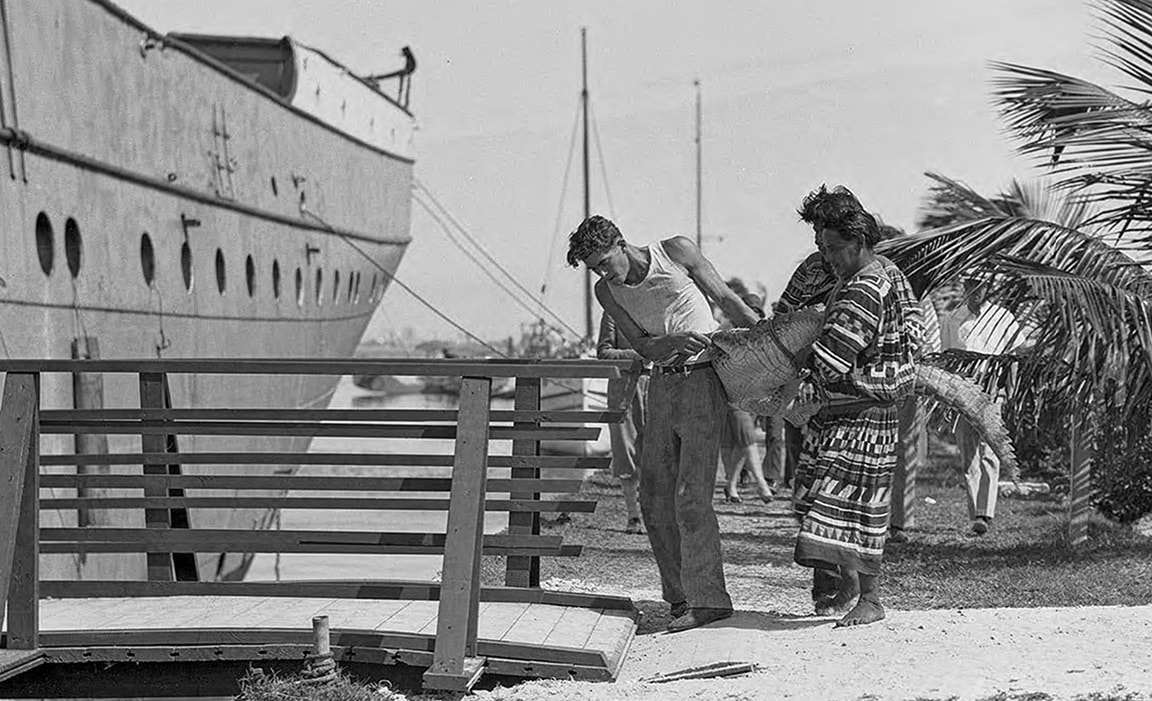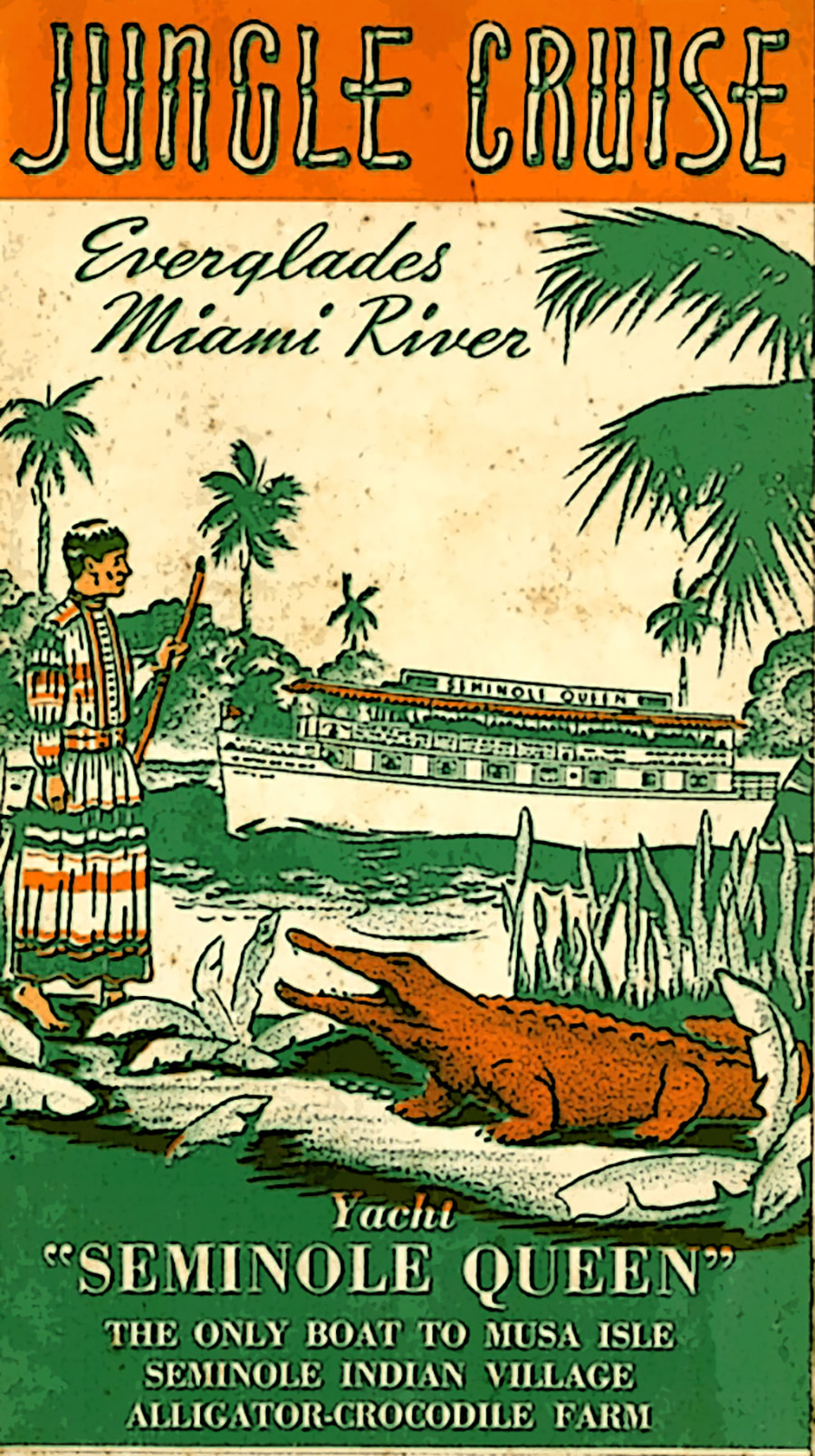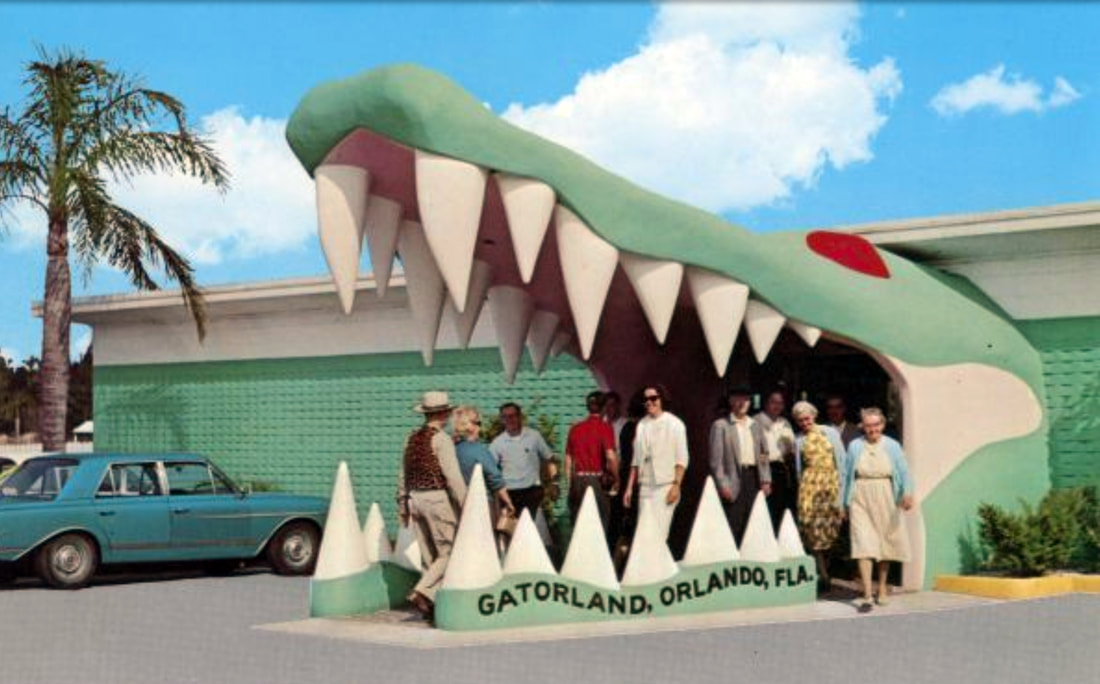|
In the late 1880s and early 1900s, crocodiles were hunted to near extinction for their hides to satisfy the demand for purses, wallets, shoes, and belts. There were sportsmen drawn to the excitement of the chase, A live crocodile captured in the coastal mangrove forests of the Upper Keys. would be strapped to an open boat, and transported to Planter, where the reptile could be shipped to Key West to connect with a steamer to New York, and would end up on exhibit in the New York Zoo. In 1901 Florida passed a bird protection act and Dade County passed a wildlife protection act, prohibiting the killing, capturing or shooting of deer, crocodile, and any wild bird. The camera became the only method for legally capturing these creatures. A photograph taken in 1900 depicts a crocodile or an alligator enjoying the primarily fresh water of the Miami Rapids. This was a popular spot for family picnics at the turn of the 20th century. In 1909, the Everglades Drainage District dynamited the rapids to make way for draining the Everglades. In the late 1930s as people moved into South Florida, the croc’s coastal mangrove habitat was further reduced by development and roadkills due to increased motor vehicle traffic. My parents were transplanted New Yorkers who discovered Ft. Lauderdale in the 1950s. Our family was typical mid-century modern adventurers; on weekends we’d pile in the family car, and take a “safari” to the nearby "lands" and “jungles,” the so called wildlife theme parks, housing monkeys, and parrots, reptiles and sea creatures… lions, tigers and bears oh my! A Miami “Jungle Cruise” brochure circa 1950, describes “after leaving the Musa Isle Seminole Indian Village, we view the State Drainage Canal, one of the five great waterways that drain the Everglades.” If you ever took an airboat ride in the Everglades, chances are at some point you would have been in the ditch, one of the man-made canals intended for draining the swamp. By the 1960’s, developers began buying up the coastal mangrove and adjacent uplands in North Key Largo. They dredged the mangroves and piled the spoils to create waterfront homesites and marinas. In 1975, with numbers reduced to only two or three hundred individuals, the crocodile was placed on the endangered species list. Crocodile Lake National Wildlife Preserve was established in 1980. Ironically development, responsible for destroying historical crocodile nesting sites, in some ways made it more hospitable for them. The crocodile has adapted, Several hundred crocodiles are thriving in the 168-miles of man-made canals surrounding the Turkey Point nuclear plant. They look for areas to lay nests that are adjacent to the waters edge, but also high enough in elevation they don't flood. They don’t spend much time on land; only to nest or to bask in the sun. The Keys attract those who come in search of a new beginning or perhaps a meaningful overnight relationship. Northerners come to escape the harsh winters, and find themselves in paradise, lounging under a tiki, on their perfect man-made beach, margarita in hand… or some other “Croc-tail”? Can you blame the crocodile for wanting to try to nest in someone's perfect beach they've created? There is tremendous turnover of population in our area, Landmark birthdays cause some to ponder life, and what’s been missing, so many come to the Keys to go fishing. Unfortunately this newbie angler catches his limit of mahi every day, cleans them and throws the scraps into the canal, and all of a sudden a crocodile shows up. The croc’s diet consists of primarily seafood. The scraps from the fishing station, which drains directly into the water, eventually disperses throughout the canal, to the vicinity of a neighbor who likes to swim in the canal, who gets upset and calls the FWC to have the crocodile removed. The crocodile, who is territorial, is relocated, only to eventually return to the same spot a short time later. There are now about 2,000 American Crocodiles living in South Florida, perhaps more than ever existed here prior to their discovery. The amount of wild lands is shrinking ever so much every year, so there is not as much wild land out there for these crocodiles to live on. The clear message is we share this neighborhood. So if you are doing an action that upsets your neighbors, both humans and wildlife, maybe you shouldn't do it.
0 Comments
Leave a Reply. |
CAROL ELLIS
This photographic website provides me the opportunity for self-expression, for sharing Archives
May 2024
TAGS
All
|
© Copyright 2022. Carol Ellis Photography.
All Rights Reserved.












 RSS Feed
RSS Feed
